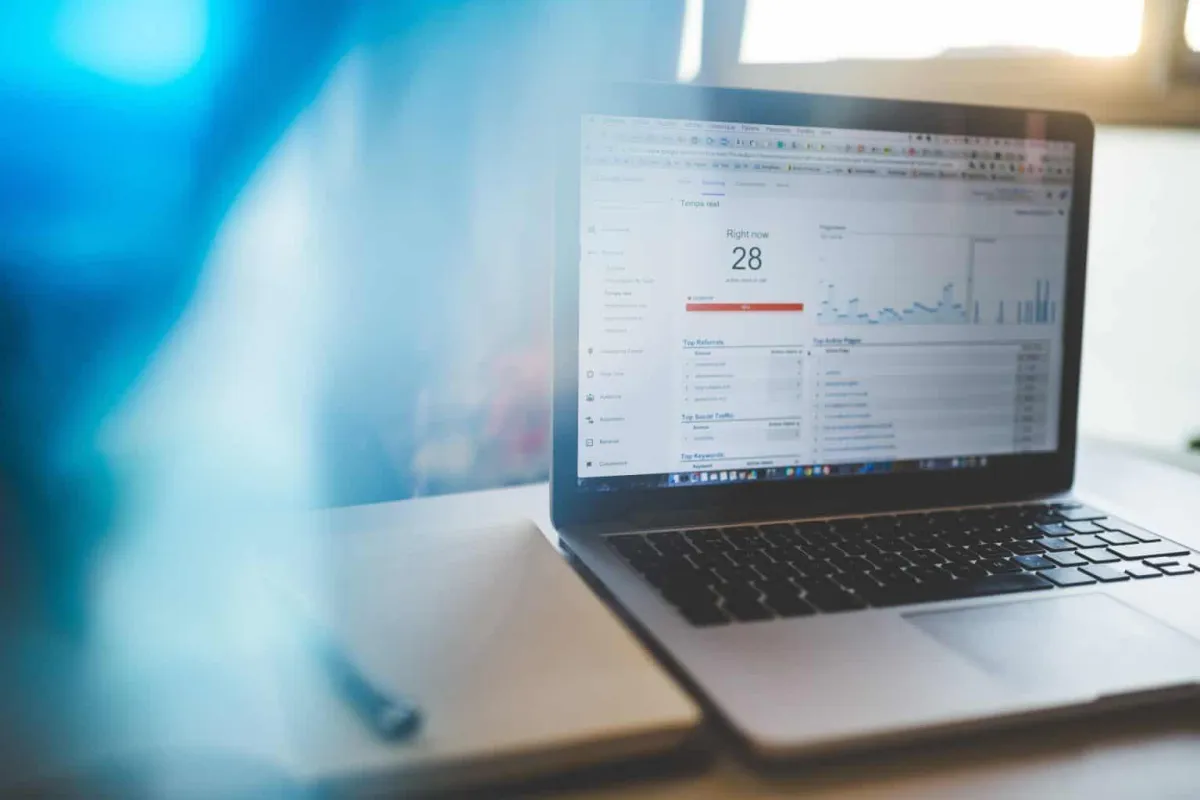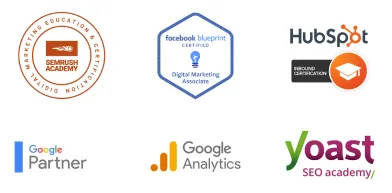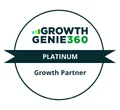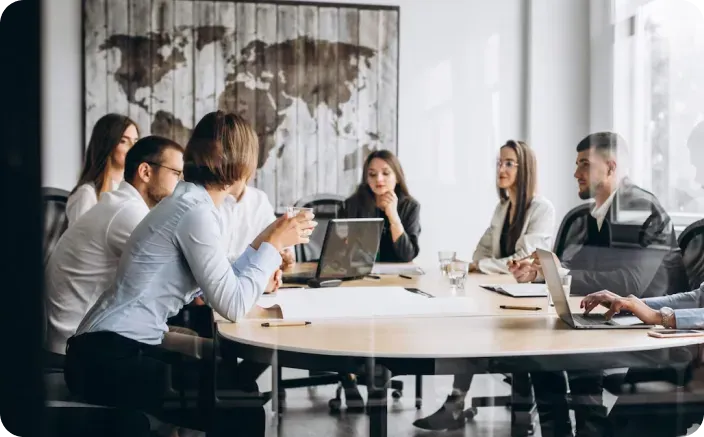TO LEARN IS TO GROW
Learning Center
We do our research and publish our results. Should probably call this the Growing Center.


The Fundamentals of 2021 Google Algorithm Update
Google has released the first wave of algorithm updates in the first week of June, causing some websites to lose their ranking visibility. In this article, we explain how these major tweaks can affect your SEO.
Page speed has been a Google ranking factor on desktop searches since 2010, although it took another eight years before its full adoption on mobile searches. But early this month, the search engine giant has started rolling out major algorithm updates that further give importance to loading speed.
The “tweaks” in the ranking signals called Core Web Vitals or CWVs will be spread out in multiple parts–in June, July, August, and December. (Note: Google is still conducting observation and adjustment, so the plans and scheduling might be tentative.)
After the first wave of updates was rolled out in the first week of June, LOJO’ marketers have noted these changes:
Many directory sites have experienced lower rankings.
Many sites with “thin” content, i.e., sites with no or very little valuable content, lost their ranking visibility.
Google has started identifying and penalizing fake airport websites.
Note: Our digital marketing specialists said they expect more volatilities as further updates are slated for the coming months.
Core Web Vitals: The Fundamental Changes
The CWVs are a set of ranking signals focusing on user experience. In a nutshell, these metrics measure real-world user experience that includes overall page speed and page performance score.
CWVs are composed of three metrics:
Largest Contentful Paint or LCP
First Input Delay or FID
Cumulative Layout Shift or CLS
Largest Contentful Paint
LCP works like a “timer” as it takes into account how long the website loads “large” elements such as graphics and images. To pass this assessment, the site should have an LCP that is 2.5 seconds or shorter, or simply put, the “large” piece of content should load in less than 2.5 seconds.
(Note: LCP only measures the elements that appear instantaneously without the users having to scroll down the page.)
Previous algorithm updates in LCP did not include offscreen elements. Furthermore, this metric can now pinpoint the largest element even if it is removed from the page later on.
According to Google, LCP accounts for 25% of the overall Performance Score.
First Input Delay
FID measures the responsiveness or lack thereof of a website every time the user makes an “action” like clicking and scrolling. To pass this metric, the site’s response time should be under 100 milliseconds.
Just like LCP, FID also accounts for 25% of the Google Performance Score.
TOPIC SELECTION
The Fundamentals of 2021 Google Algorithm Update
Eric Lay /// June 17, 2021
Google has released the first wave of algorithm updates in the first week of June, causing some websites to lose their ranking visibility. In this article, we explain how these major tweaks can affect your SEO.

Page speed has been a Google ranking factor on desktop searches since 2010, although it took another eight years before its full adoption on mobile searches. But early this month, the search engine giant has started rolling out major algorithm updates that further give importance to loading speed.
The “tweaks” in the ranking signals called Core Web Vitals or CWVs will be spread out in multiple parts–in June, July, August, and December. (Note: Google is still conducting observation and adjustment, so the plans and scheduling might be tentative.)
After the first wave of updates was rolled out in the first week of June, LOJO’ marketers have noted these changes:
Many directory sites have experienced lower rankings.
Many sites with “thin” content, i.e., sites with no or very little valuable content, lost their ranking visibility.
Google has started identifying and penalizing fake airport websites.
Table of Contents
Note: Our digital marketing specialists said they expect more volatilities as further updates are slated for the coming months.
Core Web Vitals: The Fundamental Changes
The CWVs are a set of ranking signals focusing on user experience. In a nutshell, these metrics measure real-world user experience that includes overall page speed and page performance score.
CWVs are composed of three metrics:
Largest Contentful Paint or LCP
First Input Delay or FID
Cumulative Layout Shift or CLS
Largest Contentful Paint
LCP works like a “timer” as it takes into account how long the website loads “large” elements such as graphics and images. To pass this assessment, the site should have an LCP that is 2.5 seconds or shorter, or simply put, the “large” piece of content should load in less than 2.5 seconds.
(Note: LCP only measures the elements that appear instantaneously without the users having to scroll down the page.)
Previous algorithm updates in LCP did not include offscreen elements. Furthermore, this metric can now pinpoint the largest element even if it is removed from the page later on.
According to Google, LCP accounts for 25% of the overall Performance Score.
First Input Delay
FID measures the responsiveness or lack thereof of a website every time the user makes an “action” like clicking and scrolling. To pass this metric, the site’s response time should be under 100 milliseconds.
Just like LCP, FID also accounts for 25% of the Google Performance Score.

Cumulative Layout Shift
CLS measures the website’s stability–for instance, do any of the elements move out of place as the site loads and continuously adds new elements? To pass this metric, the web page must register a score under 1.
CLS accounts for 5% of the overall Google Performance Score.
Other Equally Important Metrics
Google will add these metric changes to its previous page experience metrics such as safe browsing, HTTPS, mobile-friendliness, and absence of intrusive interstitials.
Interstitials are “screen displays” that are shown before or after an expected content page; they are generally used to confirm the user’s age and display advertising.
Safe browning metric, meanwhile, takes into account issues like malware, harmful downloads, deceptive pages, uncommon downloads. Google also provides tailored recommendations, including sample URLs, to help webmasters identify any weaknesses or loopholes in their security.
Google advises webmasters to register their site in Search Console (even if they are not experiencing any security issue), which sends them notifications if there is any security concern. Meanwhile, HTTPS further complements safe-browsing programs, promoting secure data transfer between a web server and a web browser.
The New Core Web Vitals: How Will It Impact SEO?
While the content remains the KING, Google has now given user experience more importance when it comes to website ranking.
User experience, or to be more exact, good experience, has been shown to improve bounce rates, conversation rates, and above all, sales.
From an SEO standpoint, a responsive, fast-loading website with great content will rank better than the rest of the competition. Simply put, the two most important factors that will propel the website into the top rank are excellent content and mobile-friendliness.
In contrast, excellent content that provides poor user experience–i.e., slow loading and lack of responsiveness and mobile-friendliness–will have a poor Google Search ranking.
Google’s Recent Study on Mobile Speed
The search engine giant has recently published a study on how mobile speed directly affects conversion rates.
The researchers analyzed mobile sites of 37 retail, luxury, and travel companies from the US and Europe and found that a mere 0.1s improvement in the load time can have a positive influence on the user experience and journey.
Below is the list of results with just a split-second improvement:
The conversion rate increased by 8% for retail sites.
The conversion rate jumped 10% for travel companies.
Retail consumers spent 10% more when purchasing products.
Luxury consumers engaged more, resulting in page views increasing by 8%.
With the findings, Google reiterates the importance of mobile-friendliness in improving customer experience, engagement, and ultimately, sales across different channels.
Final Words About 2021 Google Algorithm Update
At LOJO Marketing, our staff is closely monitoring Google algorithm updates and the ever-changing consumer sentiment and behavior and business landscape to help our clients maintain a good ranking and ultimately remain competitive amidst this fiercely competitive “new normal.”
Growing Businesses Since 2008
We have helped hundreds of businesses just like yours. Working for or along-side of business owner, managers, staff, or even board of directors, LOJO is ready to be an asset to your business.
Our team has been curated through the years for individual skills, personalities, and capabilities. Our clients put their trust in us to help them grow. We are here to do just that.



Growing Businesses Since 2008
We have helped hundreds of businesses just like yours. Working for or along-side of business owner, managers, staff, or even board of directors, LOJO is ready to be an asset to your business.
Our team has been curated through the years for individual skills, personalities, and capabilities. Our clients put their trust in us to help them grow. We are here to do just that.




Matthew Rogers, President
iProspect Check
After spending several months reviewing multiple proposals from several different companies we engaged LOJO to develop a new website that represents our company effectively. We worked initially with Stephen Platte who helped create the scope of the project. Stephen was knowledgeable and always followed up with me on time and as promised.
He "closed the deal" for LOJO with his professionalism, service orientation and easy going approach. Once we signed the contract we were introduced to Jay Kelly who would be the creative lead for LOJO. This was the most challenging part of the project for my company, as there was no shortage of ideas from our side. Jay managed the project flawlessly, and once we had all agreed to the design, Jay introduced us to Eric.
Eric Lay is one of the founders of LOJO. Eric took the design we had developed and brought it to life. We delivered content as quickly as he requested it. Eric kept the project on task and we responded by exceeding every deadline for content. In turn, once provided, literally not a day went by that Eric didn't add the content and take the next step. In just a few weeks we launched our new website. Eric is a pleasure to work with.
His positive attitude and consultative approach really enhanced the experience and made a big difference for us in the outcome of our project. We would welcome you to visit our website to take a look at the quality work of LOJO. We are very pleased with LOJO and look forward to working with them in the future as we pursue an aggressive SEO strategy."
After spending several months reviewing multiple proposals from several different companies we engaged LOJO to develop a new website that represents our company effectively. We worked initially with Stephen Platte who helped create the scope of the project. Stephen was knowledgeable and always followed up with me on time and as promised.
He "closed the deal" for LOJO with his professionalism, service orientation and easy going approach. Once we signed the contract we were introduced to Jay Kelly who would be the creative lead for LOJO. This was the most challenging part of the project for my company, as there was no shortage of ideas from our side. Jay managed the project flawlessly, and once we had all agreed to the design, Jay introduced us to Eric.
Eric Lay is one of the founders of LOJO. Eric took the design we had developed and brought it to life. We delivered content as quickly as he requested it. Eric kept the project on task and we responded by exceeding every deadline for content. In turn, once provided, literally not a day went by that Eric didn't add the content and take the next step. In just a few weeks we launched our new website. Eric is a pleasure to work with.
His positive attitude and consultative approach really enhanced the experience and made a big difference for us in the outcome of our project. We would welcome you to visit our website to take a look at the quality work of LOJO. We are very pleased with LOJO and look forward to working with them in the future as we pursue an aggressive SEO strategy."

Matthew Rogers, President
iProspect Check
The team at LOJO were wonderful to work with. They are well organized and very patient as we worked through our marketing strategy and developed a well thought out and clear action plan at a reasonable price. We will definitely be back for our future campaign needs."

Jon Crosby, Founder
Dazil

